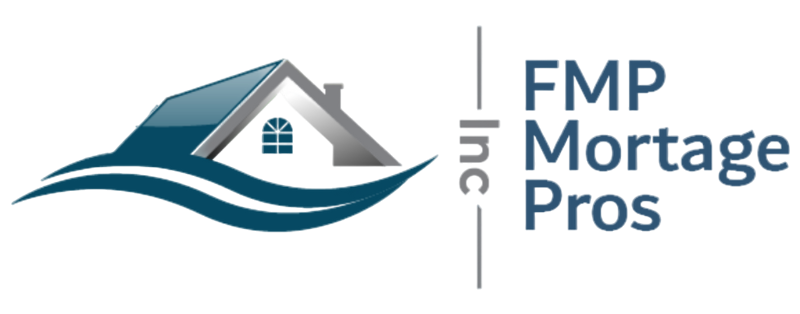
Giles Wardian
President of FMP Mortgage Pros
Giles Wardian is a licensed loan originator with over 25 years of experience helping real estate investors grow their portfolios.
If you own a rental property that’s gone up in value, you may be able to pull out cash with a refinance. That means using some of your property’s built-up equity to fund renovations, pay off debt, or buy your next investment.
With a DSCR loan, you don’t need to show personal income to qualify. Instead, you qualify based on the rental income the property brings in. It’s a great option if your property is doing well but your tax returns don’t reflect your full financial picture.
What You Need to Know
The charts and numbers below are just examples and will change based on the market and your specific situation.
Also:
Numbers in parentheses like (1.250) = good! These are credits that lower your costs.
1. Choose a Longer Prepayment Period to Lower Your Rate
When refinancing, you’ll choose how long you’ll keep the loan before paying it off or refinancing again. This is called the prepayment penalty period (PPP). The longer it is, the better your rate and the lower your costs might be.
Example:
| Interest Rate | 5-Year PPP | 4-Year | 3-Year | 2-Year |
|---|---|---|---|---|
| 7.25% | (0.156) | 0.494 | 0.569 | 1.344 |
| 7.50% | (0.791) | (0.141) | (0.116) | 0.609 |
| 8.00% | (1.922) | (1.547) | (1.172) | (0.609) |
Longer commitment = lower rate and better pricing.
2. Better Credit and Lower Loan Balance = Better Pricing
Two things can really help you get a better deal:
| FICO Score | ≤55% LTV | 60–65% | 70–75% | 75–80% |
|---|---|---|---|---|
| 760+ | (1.375) | (1.250) | (0.875) | (0.625) |
| 720–739 | (1.000) | (1.000) | (0.500) | 0.750 |
| 680–699 | 0.250 | 0.500 | 2.000 | N/A |
So if your property is worth more today, or your credit has gone up since you first bought it—you’re in a great position to refinance.
3. Strong Rental Income Can Get You Better Terms
Lenders look at how much rent your property brings in compared to what the new mortgage payment will be. This is called the DSCR (Debt Service Coverage Ratio).
| DSCR | ≤55% LTV | 60–65% | 70–75% | 75–80% |
|---|---|---|---|---|
| ≥ 1.25 | (2.650) | (2.650) | (2.000) | (0.875) |
| ≥ 1.00 | (2.125) | (2.150) | (1.250) | 0.000 |
| < 1.00 | 0.500 | 0.500 | 2.250 | N/A |
💡 Improving your rent or lowering expenses to increase your DSCR can make a big difference.
4. Interest-Only Option = Lower Monthly Payments
If you want the lowest monthly payment possible, an interest-only loan may be the way to go. You only pay the interest each month for a few years (usually 5 to 10), not the principal.
| LTV | Adjustment |
|---|---|
| ≤65% | +0.25 to +0.375% |
| >70% | Not Available |
If you make a big payment during this interest-only period, your monthly payment will go down—unlike with a regular fixed loan.
We’ll walk you through the numbers, review your goals, and help you structure a cash-out refinance that works for your situation.

Giles Wardian is a licensed loan originator with over 25 years of experience helping real estate investors grow their portfolios.

U.S. Marine Veteran and finance professional with 20+ years of experience, Antonio Stewart specializes in DSCR and bridge loans for 1–4 unit investment properties.

Debbie Dameus brings nearly a decade of mortgage experience with a focus on real estate investors and self-employed borrowers. She is highly skilled in analyzing rental income and investors return on investment for 1–4 unit investment properties.

With a Bachelor of Science in Accountancy and a background in finance and commercial lending, her experience in financial analysis and underwriting support equips her to process complex investor loans with accuracy and speed.


”FMP Mortgage Pros made the loan process seamless! Utilizing my rental income was a game changer—easy qualification without needing to provide personal income verification!”


“Acquisition & Rehab to DSCR, FMP made it seamless.They funded 80% of my duplex purchase and 100% of the rehab. Once the work was done, they refinanced me into a 30-year DSCR loan—lower payment, better cash flow. Smooth and simple!”


“They got my flip funded fast!” FMP delivered 75% of the purchase and 100% of the rehab—right on time for a competitive Fix & Flip. They understood the project, the numbers, and my goals. I made a hefty profit in just a few weeks and I’m coming back for the next one.


”FMP Mortgage Pros made the loan process seamless! Utilizing my rental income was a game changer—easy qualification without needing to provide personal income verification!”


”FMP Mortgage Pros made the loan process seamless! Utilizing my rental income was a game changer—easy qualification without needing to provide personal income verification!”


”FMP Mortgage Pros made the loan process seamless! Utilizing my rental income was a game changer—easy qualification without needing to provide personal income verification!”
